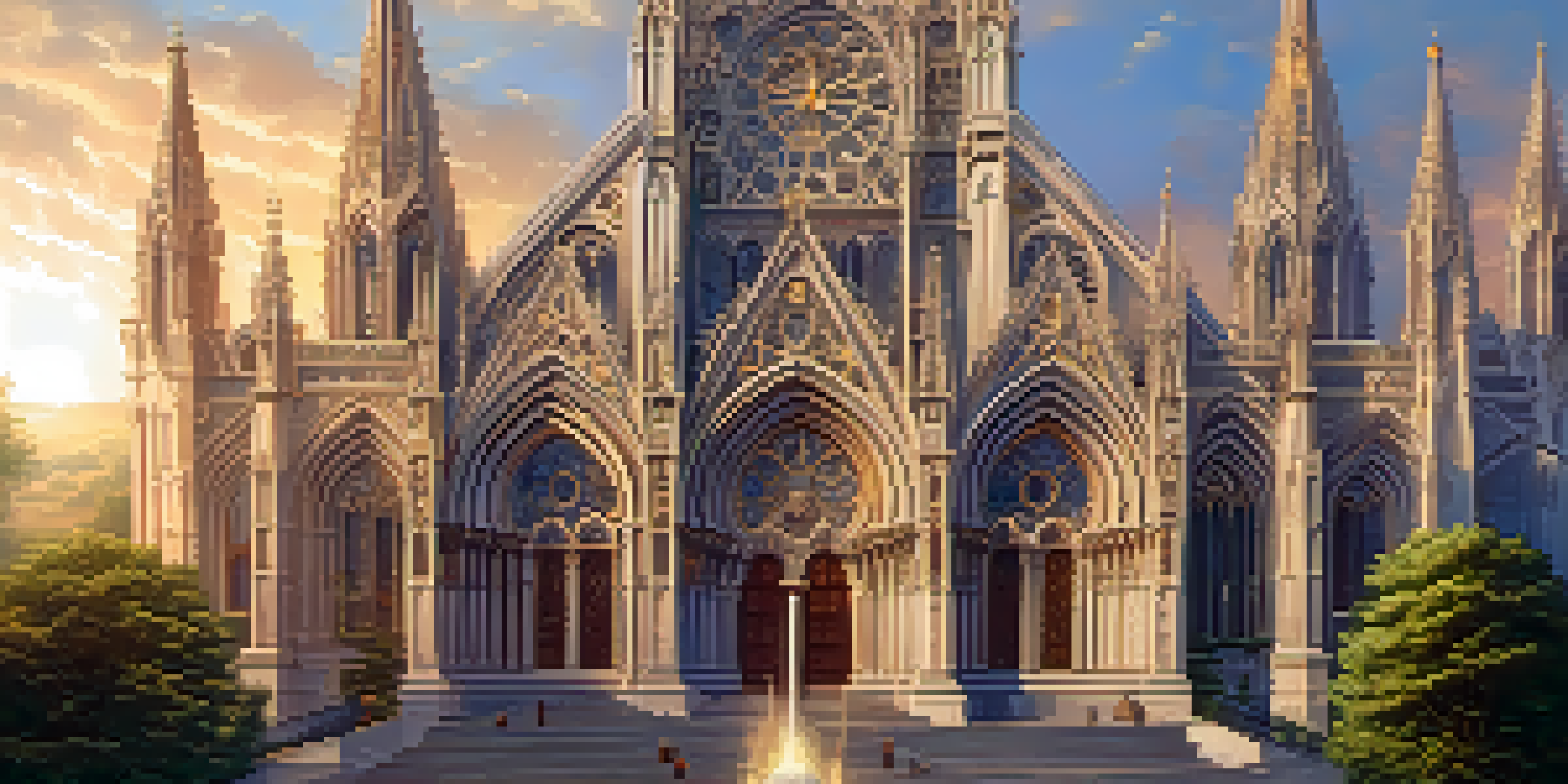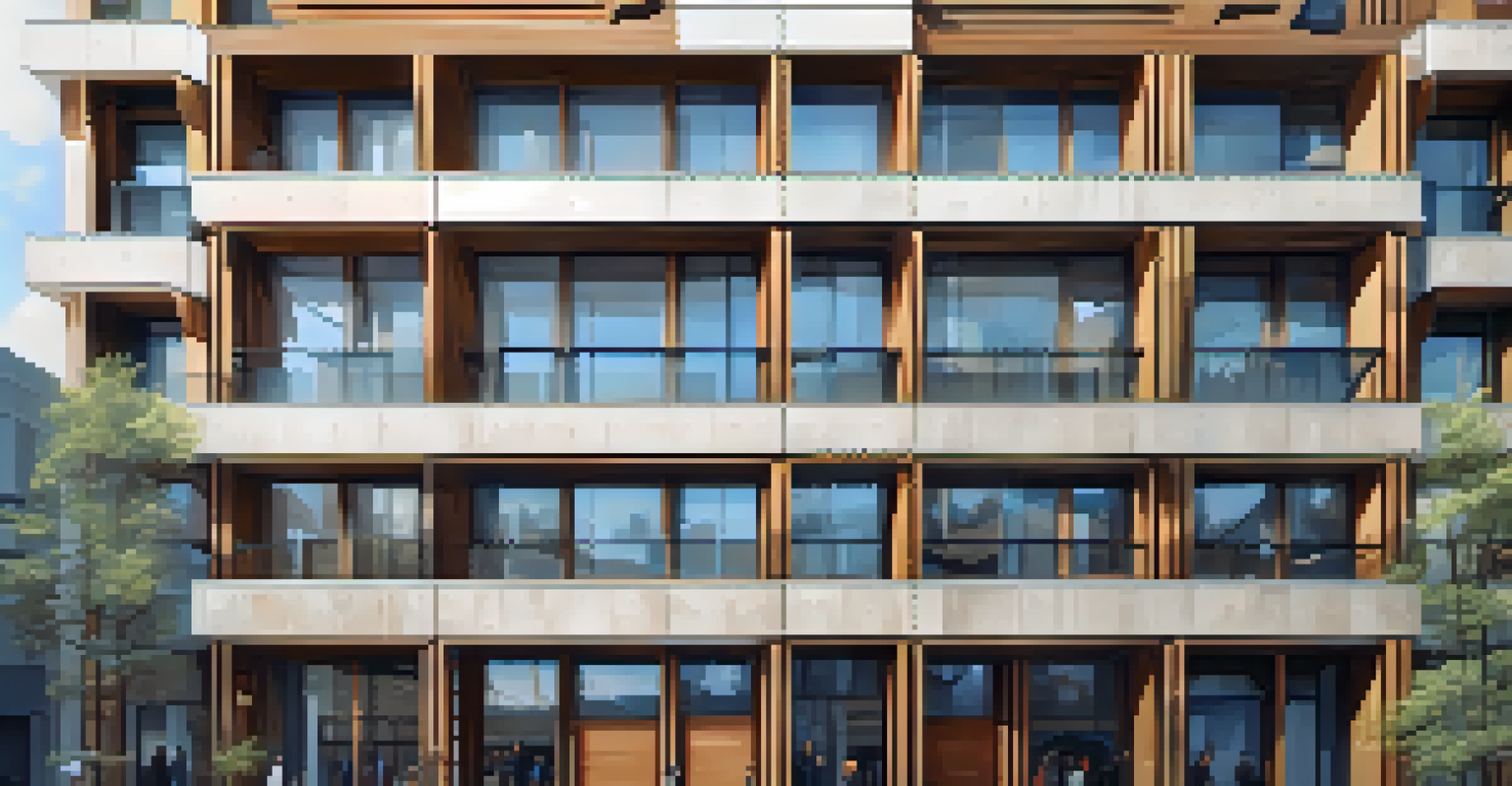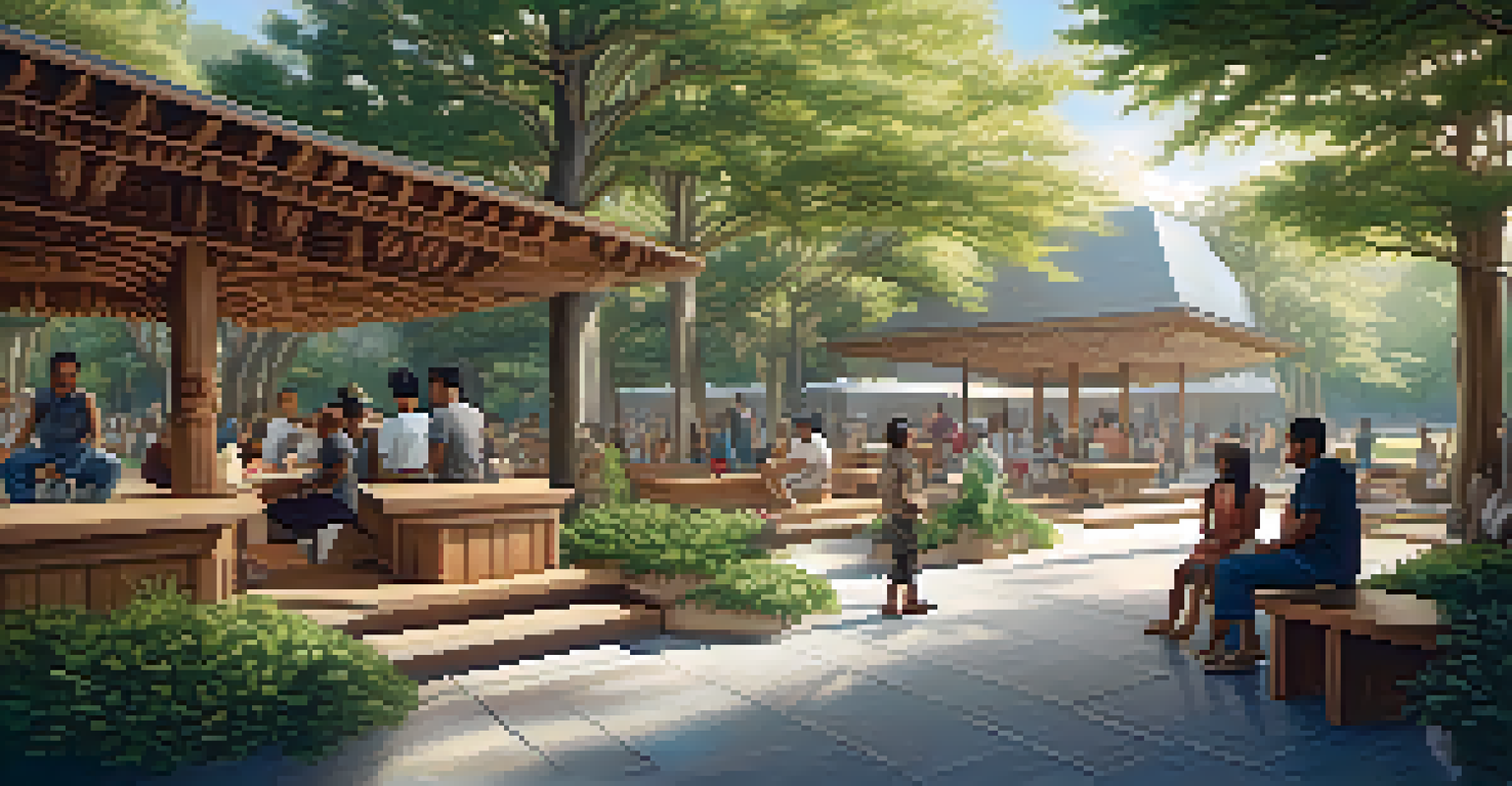How Carvings Enhance the Aesthetic of Modern Buildings

The Historical Significance of Carvings in Architecture
Carvings have long been a part of architectural design, tracing back to ancient civilizations. They often served not only a decorative purpose but also a storytelling function, conveying cultural heritage and beliefs. In modern architecture, this tradition continues, as designers draw inspiration from history to create unique structures that resonate with their surroundings.
Architecture is a visual art, and the buildings speak for themselves.
For example, Gothic cathedrals feature intricate stone carvings that tell biblical stories and reflect the artistry of their time. In contrast, modern buildings may incorporate abstract designs that symbolize progress and innovation. The evolution of carvings from ornate historical pieces to sleek contemporary motifs showcases their timeless appeal.
Ultimately, this historical context enriches the aesthetic value of modern buildings, creating a dialogue between the past and the present. Carvings serve as a bridge, allowing architects to pay homage to tradition while pushing the boundaries of design.
Carvings as a Form of Expression in Modern Design
In contemporary architecture, carvings provide architects and designers with a canvas to express their creativity. Whether it's an elegant relief on a facade or a bold geometric pattern, these details can transform a simple structure into a work of art. Each carving tells a story, reflecting the vision and personality of the architect.

Take the example of the National Museum of Qatar, where the facade features intricate patterns inspired by the natural landscape. These carvings not only enhance the visual appeal but also create a connection between the building and its environment. This kind of thoughtful design fosters a sense of place and identity.
Carvings Blend History with Modernity
Carvings in architecture create a dialogue between historical traditions and contemporary design, enriching the aesthetic value of modern buildings.
Moreover, carvings can evoke emotions and provoke thought, inviting passersby to engage with the building on a deeper level. As a result, they contribute to a richer urban experience, making the spaces we inhabit more meaningful and memorable.
The Role of Technology in Modern Carving Techniques
Advancements in technology have revolutionized the way carvings are created and integrated into modern buildings. Tools such as CNC (Computer Numerical Control) machines allow for precise and intricate designs that were once labor-intensive and time-consuming. This technology enables architects to push the limits of creativity without compromising on quality or detail.
Good buildings come from good people, and all problems are solved by good design.
For instance, the use of 3D printing has also emerged as a game-changer, allowing for unique and complex patterns that can be customized for specific projects. This innovation not only enhances aesthetic appeal but also offers cost-effective solutions for large-scale applications. The combination of tradition and technology leads to a new era of architectural design.
As a result, modern buildings can showcase stunning carvings that reflect both artistry and cutting-edge technology. This blend of old and new not only captivates the eye but also represents the evolution of architectural practices.
Enhancing Building Identity Through Carvings
Carvings play a crucial role in establishing a building's identity and character. They can set a structure apart from its surroundings, making it instantly recognizable. Architects often use unique carving styles to infuse their designs with personality, reflecting the purpose of the building or the values of the organization it houses.
For example, a corporate building might feature sleek, modern carvings that convey professionalism and innovation, while a cultural center might utilize traditional motifs that celebrate heritage. This thoughtful approach to design creates a sense of belonging and pride for the occupants and the community.
Expression Through Carvings
Modern architectural carvings serve as a canvas for creativity, enhancing a building's identity and fostering emotional connections with the community.
Furthermore, distinctive carvings can enhance brand visibility and recognition, acting as visual anchors within the urban landscape. As people interact with these buildings, they form connections that transcend mere functionality, turning architecture into a cultural touchstone.
The Sustainability Aspect of Carvings in Architecture
Sustainability is a key consideration in modern architecture, and carvings can contribute to this goal in various ways. By using local materials and traditional craftsmanship, architects can create structures that are not only beautiful but also environmentally friendly. This approach promotes a sense of stewardship for the land and its resources.
Additionally, well-designed carvings can enhance energy efficiency by playing a role in passive heating and cooling strategies. For instance, strategically placed carvings can influence airflow and light penetration, reducing the need for artificial heating or cooling. This integration of art and function exemplifies the potential of carvings to contribute to sustainable design.
Ultimately, the use of carvings in architecture showcases a commitment to both aesthetic beauty and responsible design choices. It reflects a growing awareness of the impact buildings have on the environment and communities.
Community Engagement Through Architectural Carvings
Carvings can foster community engagement by inviting local artists and craftspeople to participate in the design process. This collaborative approach not only enriches the aesthetic of the building but also strengthens community ties, as residents feel a sense of ownership over their environment. When a building incorporates local artistic styles and traditions, it resonates deeply with the community's identity.
For instance, public spaces adorned with community-inspired carvings can serve as gathering spots and cultural hubs, encouraging social interaction and creativity. Such initiatives often result in buildings that are not just structures but also symbols of community pride.
Sustainability and Community Impact
Carvings contribute to sustainable architecture by using local materials and engaging communities in the design process, resulting in structures that reflect shared values.
Moreover, when communities are involved in the design process, the resulting architecture reflects their values and aspirations. As a result, carvings can become a medium for storytelling, allowing communities to share their narratives through the buildings they inhabit.
Future Trends: Carvings in Tomorrow's Architecture
As architecture continues to evolve, the role of carvings is likely to expand even further. Emerging trends indicate a growing interest in integrating carvings with interactive technology, creating dynamic facades that change and respond to their environment. This fusion of art and technology can create a more immersive experience for those who interact with these buildings.
Moreover, with the increasing emphasis on biophilic design—an approach that seeks to connect people with nature—carvings may incorporate organic forms and natural patterns, blurring the lines between the built environment and the natural world. This trend speaks to a deeper understanding of the psychological benefits of nature in urban spaces.

As we look to the future, the potential for carvings to enhance the aesthetic of modern buildings is limited only by our imagination. They will continue to play a vital role in shaping the visual landscape of cities, ensuring that architecture remains a vibrant expression of culture and creativity.